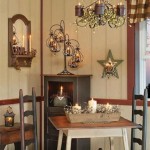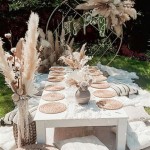The Enduring Appeal of White and Black Home Decor
The timeless combination of white and black in home decor continues to captivate homeowners and designers alike. Its inherent versatility allows for a wide range of stylistic interpretations, from minimalist and modern to classic and traditional. The stark contrast creates visual interest and a sense of sophistication that is difficult to replicate with other color palettes. This article will explore the various aspects of implementing a white and black decor scheme effectively, covering design principles, material selection, and practical considerations.
The Psychological Impact of White and Black
The choice of colors in interior design significantly impacts the overall mood and atmosphere of a space. White and black, being extremes on the color spectrum, evoke distinct psychological responses. White is often associated with purity, cleanliness, and spaciousness. It reflects light effectively, making rooms feel brighter and more open. Black, on the other hand, represents sophistication, power, and elegance. It can ground a space and create a sense of intimacy. The balanced use of both colors is crucial to avoid a room feeling sterile or overly dramatic.
The specific ratio of white to black will influence the overall feeling of the room. A predominantly white space with black accents will feel lighter and airier, whereas a space with more black can create a more dramatic and intimate atmosphere. Understanding the psychological effects of each color is essential for creating a space that resonates with the homeowner's personal preferences and intended use.
Beyond the basic associations, the texture and finish of the materials employed can further alter the perceived psychological impact. For instance, matte black walls can feel softer and more inviting than glossy black walls, which may appear more severe. Similarly, textured white walls can add warmth and depth to a space, preventing it from feeling clinical.
Implementing a White and Black Color Palette
Successfully integrating a white and black color scheme requires careful consideration of several factors. The size and layout of the room, the amount of natural light available, and the desired aesthetic all play a crucial role in determining the appropriate balance and application of each color. A small room, for example, benefits from a predominantly white palette to maximize the sense of space, while a larger room can handle a more generous use of black.
The choice of furniture and accessories is equally important. Opting for furniture with clean lines and simple silhouettes enhances the modern aesthetic often associated with white and black decor. Incorporating natural materials such as wood, leather, and stone can add warmth and texture, preventing the space from feeling too stark or impersonal. Metal accents, such as chrome or brass, can also add a touch of glamour and sophistication.
Textiles play a vital role in softening the stark contrast between white and black. Throw pillows, blankets, and rugs in varying shades of gray or patterns that incorporate both colors can add depth and visual interest. Consider using different textures, such as velvet, linen, or faux fur, to create a more layered and inviting space. Window treatments should also be carefully considered. Sheer white curtains can allow natural light to filter through while maintaining privacy, while blackout curtains in black can provide a dramatic backdrop and enhance the sense of intimacy.
Lighting is paramount in any interior design scheme, but it is particularly crucial in a white and black space. The right lighting can accentuate the contrast between the colors and highlight architectural details. Layering different types of lighting, such as ambient, task, and accent lighting, can create a more dynamic and functional space. Consider using warm-toned light bulbs to prevent the room from feeling too cold or sterile.
Material Selection and Texture in White and Black Decor
The selection of materials and textures is crucial for adding depth and visual interest to a white and black decor scheme. Relying solely on flat, untextured surfaces can result in a space that feels flat and uninviting. Incorporating a variety of materials with different textures can create a more dynamic and engaging environment.
Hard surfaces like tile, stone, and wood can be effectively used in both white and black. White marble countertops paired with black cabinetry create a classic and elegant look in a kitchen or bathroom. Black slate flooring can add a touch of drama to an entryway or living room. Wood flooring, stained in a dark ebony hue, can provide a warm and grounding element to a predominantly white space.
Soft surfaces like upholstery, rugs, and curtains can further enhance the texture and visual appeal. A plush white rug can add a sense of luxury and comfort to a living room, while black leather upholstery can provide a sophisticated and durable seating option. Curtains in a textured fabric, such as linen or velvet, can add depth and dimension to a window.
Metallic accents can also contribute to the overall texture and visual interest of the space. Chrome, brass, and copper finishes can add a touch of glamour and sophistication. Consider using metal hardware on cabinets and drawers, or incorporating metal lighting fixtures and decorative accessories.
Plants can bring life and texture into any interior space. Green foliage provides a refreshing contrast against the backdrop of white and black, adding a touch of nature and vitality. Consider using a variety of plants with different shapes, sizes, and textures to create a more dynamic and visually appealing display.
Accessories also play a crucial role in adding texture and personality to a white and black space. Artwork, sculptures, and decorative objects can be used to create focal points and add visual interest. Consider incorporating items with different textures, such as ceramics, glass, and metal, to create a more layered and eclectic look. Bookshelves can also be styled with a mix of books, objects, and plants to add texture and depth.
Incorporating Patterns and Accents in a White and Black Space
While the foundation of the decor relies on white and black, the inclusion of patterns and accent colors is essential to prevent monotony and inject personality. Patterns can introduce visual interest and depth, while accent colors can break up the monochrome palette and add a touch of vibrancy.
Geometric patterns are a popular choice for white and black decor, as they complement the modern aesthetic often associated with this color scheme. Stripes, chevrons, and hexagons can be used on rugs, wallpaper, or upholstery to add visual interest without overwhelming the space. Consider using patterns in varying scales to create a more dynamic and layered look.
Organic patterns, such as floral or botanical prints, can also be incorporated to soften the stark contrast between white and black. These patterns can be used on curtains, bedding, or wallpaper to add a touch of nature and femininity to the space. Consider choosing patterns with muted colors or subtle textures to maintain a cohesive look.
Accent colors can be used sparingly to add a pop of vibrancy and personality to a white and black space. A single accent color, such as gold, silver, or a bold jewel tone, can be used on accessories, artwork, or furniture to create a focal point and break up the monochrome palette. Consider choosing an accent color that complements the overall style and aesthetic of the space.
Gray is an excellent neutral accent color that seamlessly blends with white and black. Various shades of gray can be incorporated to add depth and dimension to the space. Gray can be used on walls, furniture, or textiles to create a more layered and sophisticated look.
When incorporating patterns and accent colors, it is crucial to maintain a sense of balance and cohesion. Avoid using too many different patterns or accent colors, as this can create a cluttered and overwhelming look. Stick to a limited palette and repeat patterns and colors throughout the space to create a sense of harmony.
Metallic accents, such as gold, silver, or copper, can also be used to add a touch of glamour and sophistication to a white and black space. Consider using metal hardware on cabinets and drawers, or incorporating metal lighting fixtures and decorative accessories. These accents can reflect light and add a subtle shimmer to the space.
Ultimately, the successful implementation of a white and black home decor scheme hinges on a thoughtful approach to color balance, material selection, pattern integration, and the incorporation of personal touches. The inherent versatility of this classic combination allows for endless possibilities, ensuring a timeless and elegant result.
:strip_icc()/timeless-black-white-design-e92ff63ae07c4b608ac2945d4ed20d2c.jpg?strip=all)
33 Modern Black And White Décor Ideas

Home Tour A Warm And Cosy With Black White Decor Your Diy Family

No Gray Area How To Slay The Black And White Home Decor Trend

3 Black Home Decor Ideas That You Will Love Doğtaş

O Dourado Marcando Presença Em Pequenos Detalhes Que Fazem A Diferença Black And White Living Room
Black And White Living Room Ideas For Your Home Inspirations Essential
:strip_icc()/black-white-photos-b1d7cd5f3f964b9193ae6f1e7dda9d18.jpeg?strip=all)
33 Modern Black And White Décor Ideas

Black And White Scandinavian Boho Home Decor Living Room

40 Black And White Decor Ideas How To Decorate With For The Holidays

Diy Black White Decor Projects Ohmeohmy Blog
Related Posts







